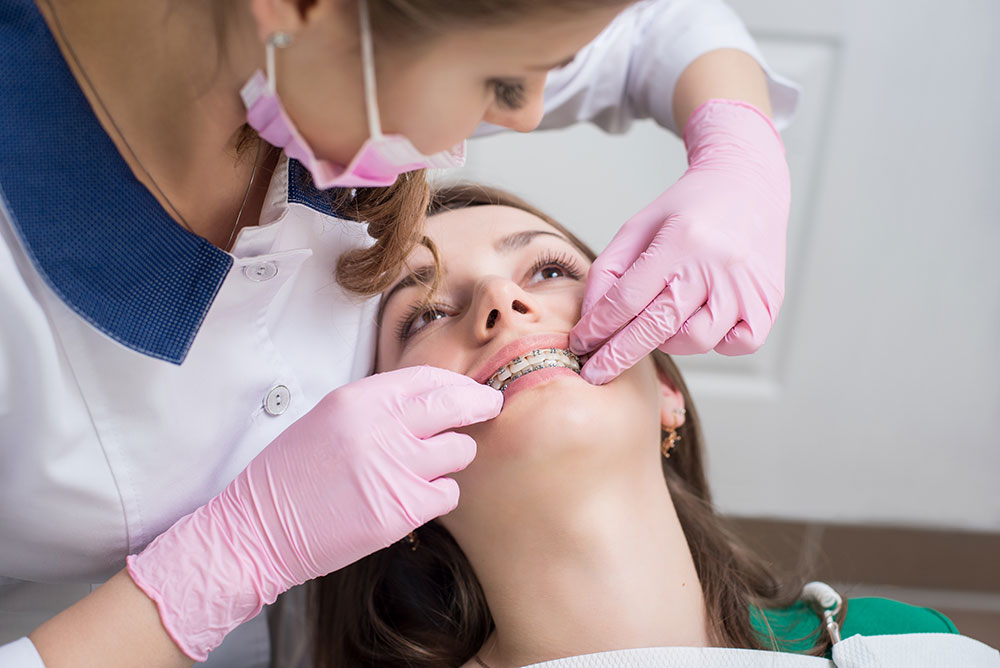Legacy Orthodontics Things To Know Before You Get This
Legacy Orthodontics Things To Know Before You Get This
Blog Article
7 Simple Techniques For Legacy Orthodontics
Table of ContentsThe 2-Minute Rule for Legacy OrthodonticsSome Of Legacy OrthodonticsThe Greatest Guide To Legacy OrthodonticsLegacy Orthodontics Things To Know Before You BuyThe Main Principles Of Legacy Orthodontics
In addition, we provide adjustable treatment schedules, adaptable repayment choices and an enjoyable, delightful experience.An orthodontist is a dental professional educated to identify, avoid, and treat teeth and jaw irregularities. Orthodontists work with individuals of all ages, from youngsters to grownups.
Malocclusion, or misaligned teeth, can lead to oral problems, including dental caries, gum tissue illness, and challenging or agonizing chewing. Yet not everybody is born with straight teeth. If you have a negative bite or huge areas between your teeth, you may intend to seek advice from a dental expert concentrating on orthodontic care.
Get This Report on Legacy Orthodontics
( Photo Credit: DigitalVision/Getty Images) Orthodontists utilize fixed and detachable dental gadgets, like dental braces, retainers, and bands, to change the position of teeth in your mouth. Orthodontic therapy is for dental abnormalities, consisting of: Misaligned teethBite troubles, like an overbite or an underbiteCrowded teeth or teeth that are also much apartJaw misalignmentThe goal of orthodontic treatment is to boost your bite.
A healthy bite guarantees you can eat, eat, and talk correctly. While you could believe of orthodontists as mainly for kids or young adults that require dental braces, they can correct oral problems at any type of age. Orthodontists participate in university, oral school, and orthodontic institution. After college graduation, they invest 2 or 3 years in an orthodontic residency program.
, but not all dental experts are orthodontists. They concentrate on two areas: How to properly and securely move teeth Just how to properly lead advancement in the teeth, jaw, and faceOnce an orthodontist has actually finished training, they have the choice to come to be board certified.
The Single Strategy To Use For Legacy Orthodontics
Imbalance, or malocclusion, is one of the most usual reason people see an orthodontist. It is hereditary and is the result of size differences in between the upper and reduced jaw or between the jaw and teeth. Malocclusion results in tooth congestion, a twisted jaw, or uneven bite patterns. Malocclusion is usually treated with: Your orthodontist connects steel, ceramic, or plastic square bonds to your teeth.
If you have only you can try here minor malocclusion, you may be able to use clear dental braces, called aligners, as opposed to standard dental braces (https://www.magcloud.com/user/legacyortho). Some individuals need a headgear to aid move teeth right into line with pressure from outside the mouth. After braces or aligners, you'll need to wear a retainer. A retainer is a custom-made device that keeps your teeth in location.
They're most commonly utilized on children. They can produce extra area in the mouth without having to pull teeth. If you have a serious underbite or overbite, you might require orthognathic surgical procedure (likewise called orthodontic surgical procedure) to extend or reduce your jaw. Orthodontists use cords, medical screws, or plates to sustain your jaw bone.
You might need to see an orthodontist if you have: Crowding or not sufficient space for all of your teethOverbite, when your upper teeth come your bottom teethUnderbite, when your base teeth are also far forwardSpacing or concerns with gapsCrossbite, which is when your top teeth fit behind your base teeth when your mouth is closedOpen bite or an upright space between your front bottom and top teethMisplaced midline, when the facility of your bottom and upper teeth do not align Dealing with an oral malocclusion can: Make biting, eating, and speaking easierImprove the symmetry of our face and your total appearanceEase pain from temporomandibular joint disordersDifferent your teeth and make them simpler to cleanse, aiding avoid dental cavity or dental caries It's often a dental practitioner that initially notices misaligned teeth throughout a routine exam.
All About Legacy Orthodontics

During your first orthodontic consultation, you'll likely have: A dental examPhotos taken of your face and smileDental X-raysPanoramic (360 degree) X-rays of your face and headImpressions to develop molds of your teethThese examinations will certainly help your orthodontist recognize exactly how to proceed with your therapy. leesburg clear braces. An orthodontist is a dental practitioner that's had training to treat your teeth and jaw
Orthodontists may execute surgical procedure, exams,X-rays,and more to assist you acquire an extra comfortable, healthier smile. An orthodontist is focused on your bite, so something like a cracked tooth would certainly be taken care of by a dental practitioner. Orthodontists are dental practitioners but not all dental experts are orthodontists. Orthodontists are concentrated on your bite, or the way your teeth fit together, and the straightness of your teeth.
Ever questioned exactly how celebrities always seem to have flawlessly aligned teeth? Orthodontists are dental specialists that concentrate on dealing with abnormalities in the teeth and jaws.
Facts About Legacy Orthodontics Revealed

, orthodontists have a varied toolkit at their disposal. These tried-and-true braces utilize a system of braces adhered to the teeth and attached by cords.
Clear aligners, like Invisalign, are a popular choice for patients seeking a much more very discreet therapy option. These detachable trays are custom-made to progressively shift the teeth's position. Headgear may be used together with dental braces or aligners to use added targeted pressures, especially for remedying jaw disparities. In situations of slim jaws, palatal expanders can be utilized to produce area for appropriate tooth alignment.
Report this page